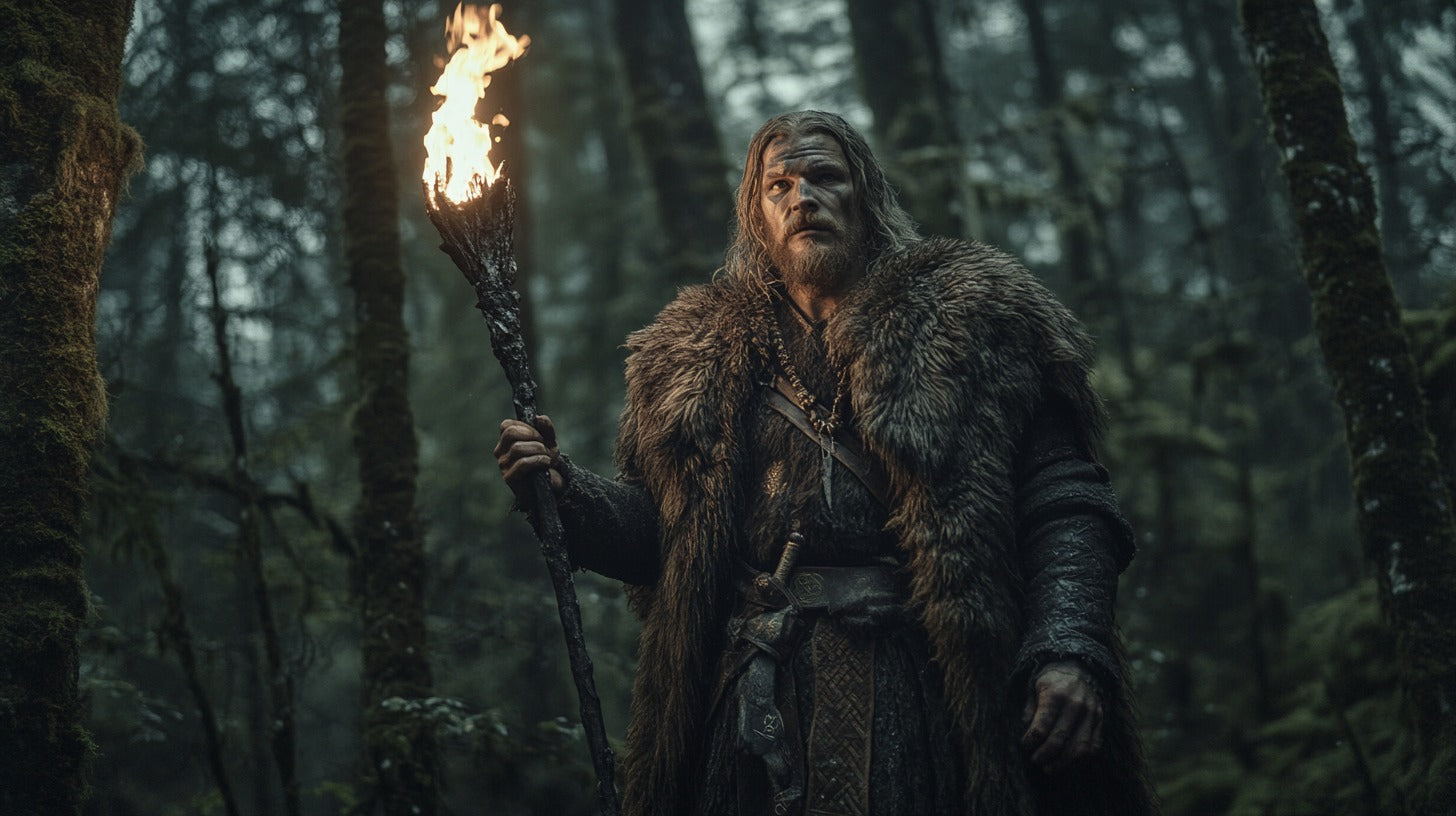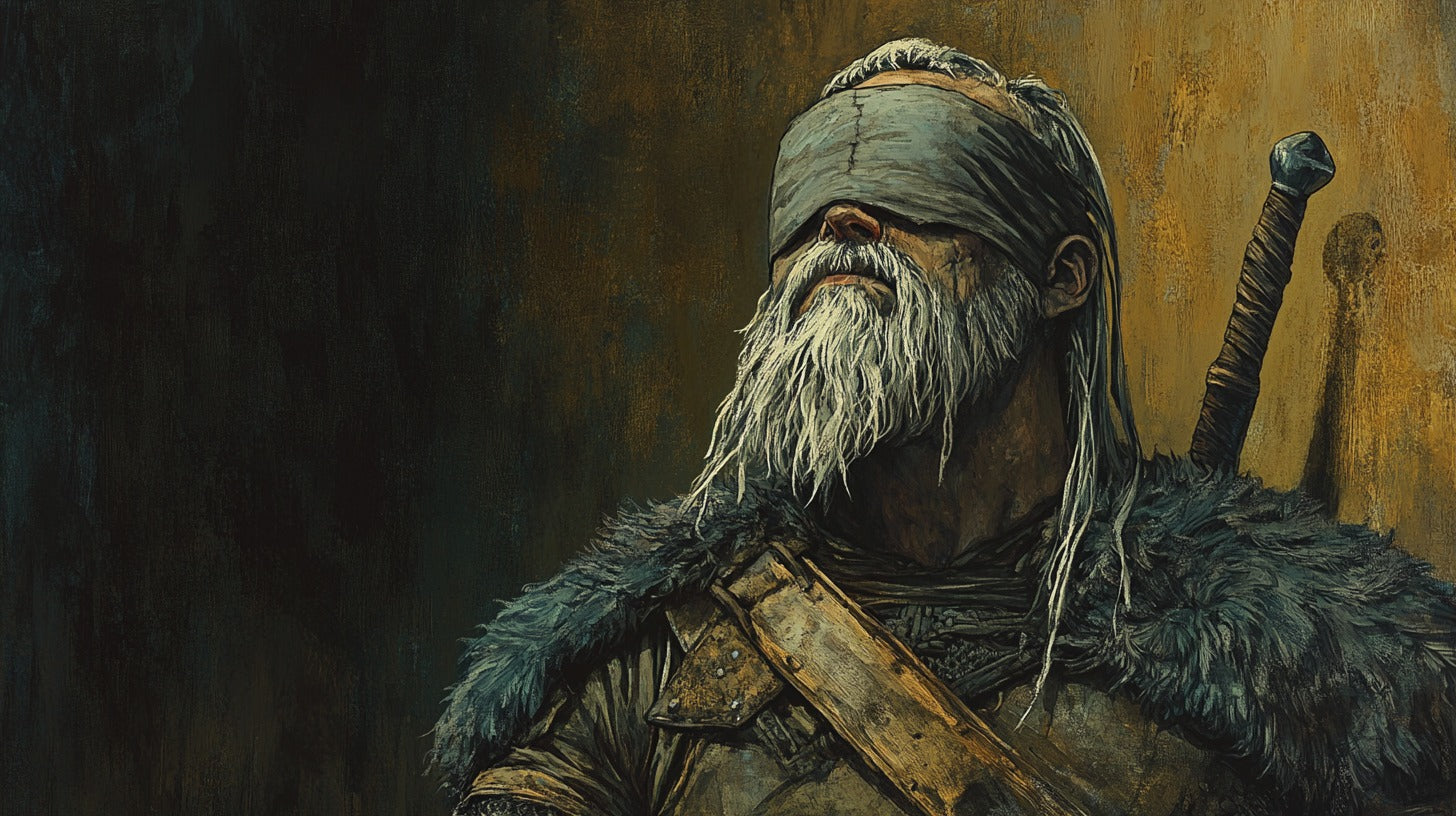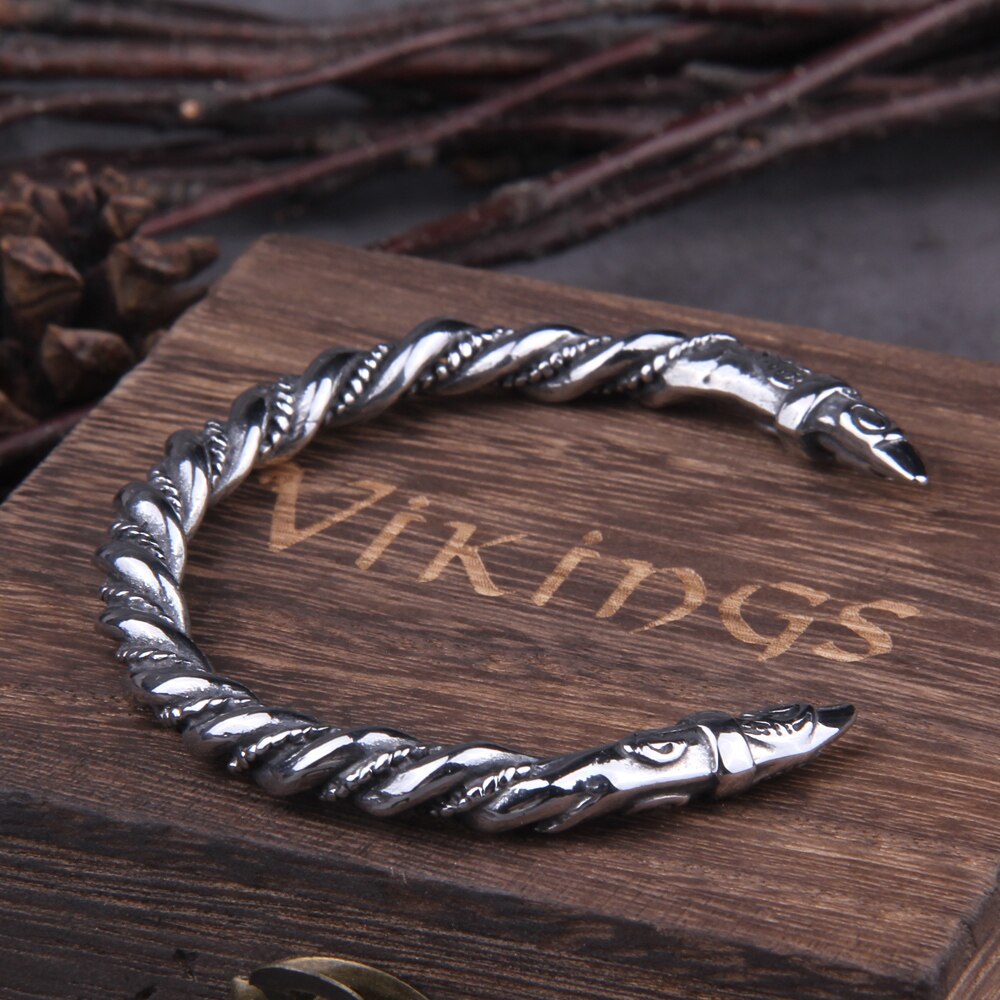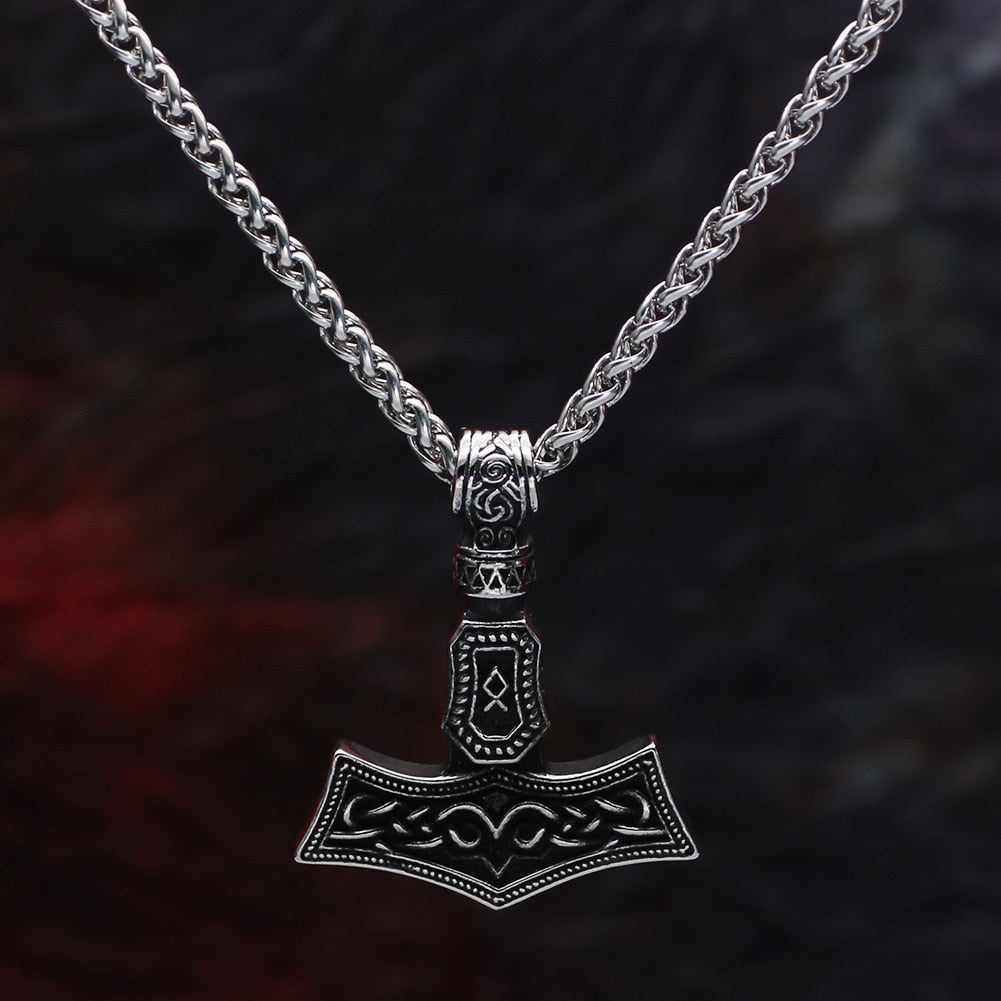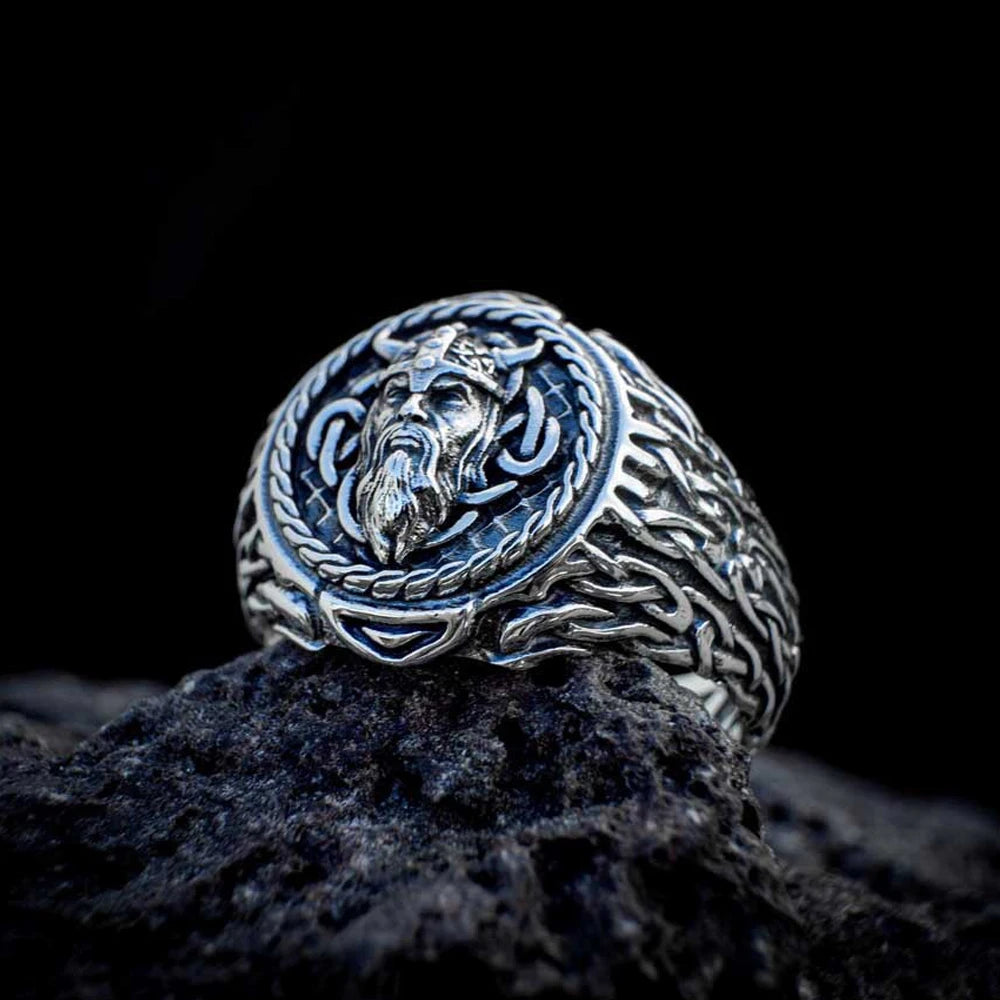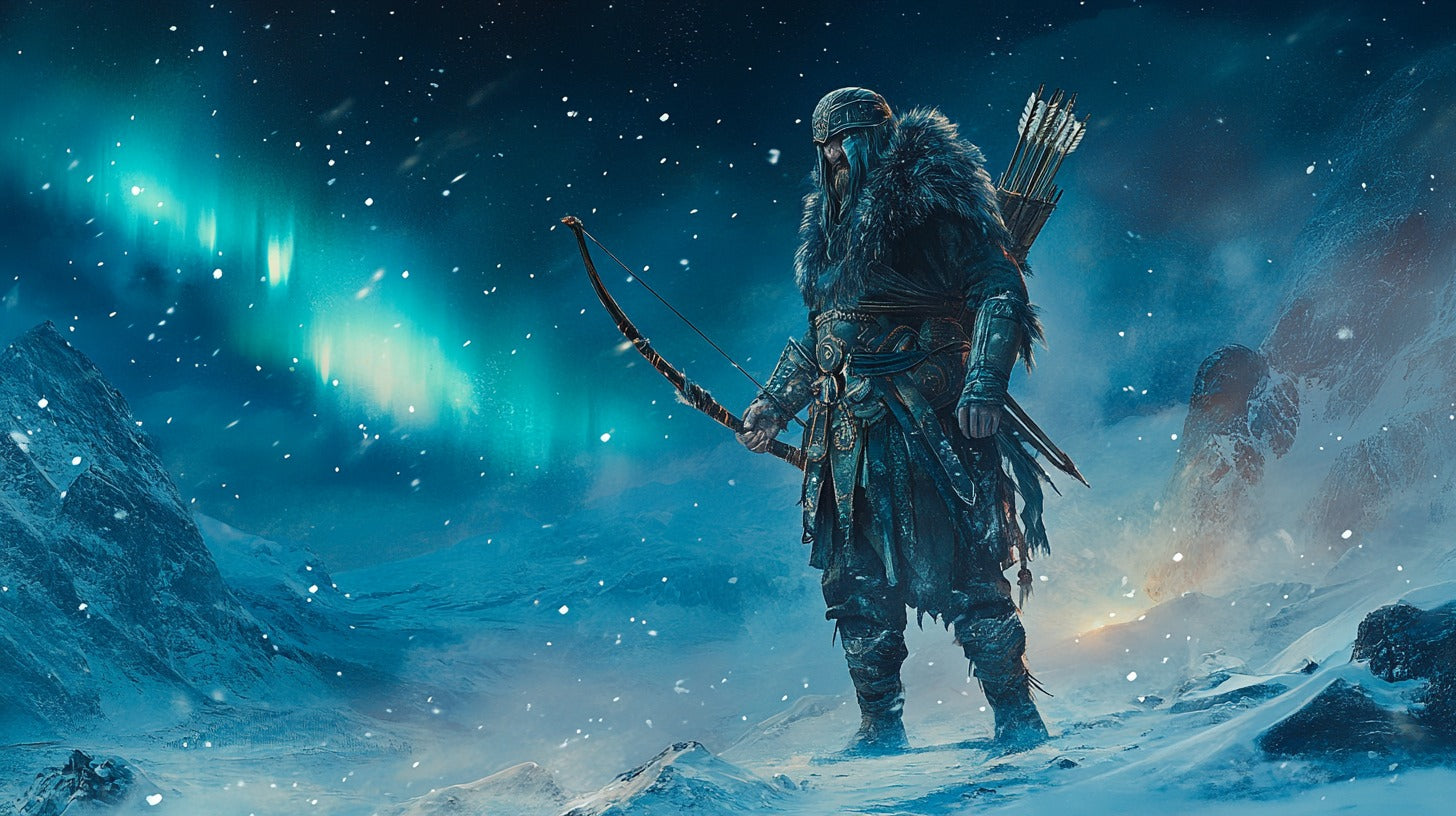
Ullr: The Norse God of Winter, Archery, Oaths
Ullr (Old Norse: Ullr), also known as Ullin in some sources, stands as one of the more enigmatic figures in Norse mythology. The name Ullr likely derives from the Proto-Germanic word *wulþuz, meaning "glory" or "splendor." Linguistic evidence suggests an ancient origin for this deity, potentially predating the better-known Norse gods such as Odin and Thor in some regions.
Historical records concerning Ullr remain fragmentary, with most surviving information coming from medieval Icelandic sources and place-name evidence across Scandinavia. The relative scarcity of literary sources about Ullr, contrasted with the abundance of place names bearing his name, suggests his worship may have declined before the systematic recording of Norse mythology began.
Divine Attributes and Domains

Illustration from an 18th-century Icelandic manuscript showing Ullr with his skis and bow
Ullr's primary association with winter emerges clearly from both literary and archaeological evidence. Medieval sources describe him as a skilled skier and ice skater, abilities that connected him intimately with winter travel and survival in the harsh Nordic climate. These associations made him particularly significant in northern communities where winter survival skills proved crucial.
Historical sources consistently portray Ullr as an exceptional archer and hunter. The Prose Edda, compiled by Snorri Sturluson in the 13th century, specifically mentions his prowess with the bow. This expertise in hunting connected him to both survival skills and martial prowess in Norse society.
Archaeological evidence, including rock carvings and ski artifacts from various Scandinavian sites, supports Ullr's connection to skiing. His role as patron of winter travelers and skiers reflects the practical importance of winter mobility in Norse society. Some scholars suggest he may have been invoked for protection during winter journeys.
Cultural Significance

Hoddmímis - Norse Pagan Yggdrasil Ring
While direct evidence of cultic practices devoted to Ullr remains limited, place-name evidence suggests widespread worship across Scandinavia, particularly in Sweden and Norway. The term "Ullr's Temple" (Ullarvar) appears in several place names, indicating dedicated worship sites.
Place names containing Ullr's name cluster notably in eastern Norway and central Sweden, suggesting these regions as possible centers of his worship. The distribution pattern indicates stronger popularity in inland areas where winter skills proved particularly crucial for survival.
Archaeological Evidence

A depiction of Ullr can be seen on the bottom left of the 11th-century Böksta Runestone (Photo: I, Berig CC BY 2.5).
Toponymic evidence provides crucial insights into Ullr's historical significance. Places such as Ullevi ("Ullr's sanctuary") appear frequently in Swedish place names, while Norwegian locations like Ullensvang demonstrate his importance across Scandinavia. These place names often indicate sites of former religious significance.
Archaeological findings related to Ullr's worship remain limited but significant. Artifacts including ski equipment, archery implements, and religious objects found at sites bearing his name provide tangible connections to his worship. However, definitively linking specific artifacts to Ullr worship often proves challenging.
Literary References

24pcs Norse Elder Futhark Rune Web of Wyrd Bead Set
The primary literary sources for Ullr come from medieval Icelandic texts, particularly the Prose Edda and various skaldic poems. These sources, while written in the Christian era, preserve older traditions about his role and attributes. The Grímnismál, part of the Poetic Edda, mentions Ullr's hall, Ýdalir (Yew Dales), suggesting connections to yew wood used in bowmaking.
Skaldic verses provide additional, though limited, information about Ullr. These complex poems often use his name in kennings (poetic circumlocutions), suggesting his continued cultural significance even as active worship declined. Particularly notable are references to him as a ski-god and archer.
Modern Interpretations

Ullr is featured on Ullensaker's coat of arms
Contemporary Understanding
Modern scholarship continues to debate Ullr's historical importance and precise role in Norse religion. Some scholars suggest he may represent an older layer of Germanic religion, potentially predating the better-documented Æsir gods. His connection to winter skills and hunting reflects practical aspects of Norse life that remained crucial throughout the medieval period.
Cultural Legacy
Ullr's influence extends into modern times, particularly in winter sports culture. Several ski resorts and winter sports competitions bear his name, reflecting his enduring association with winter activities. His legacy demonstrates how ancient religious figures can maintain cultural relevance through their associated domains.
Ullr represents a fascinating example of how archaeological, linguistic, and literary evidence can illuminate our understanding of ancient Norse religion. While many aspects of his worship remain uncertain, his significance in winter survival skills and hunting clearly influenced Norse society. His enduring legacy in place names and winter sports culture demonstrates the lasting impact of Norse religious traditions on modern Scandinavian and global culture.
Frequently Asked Questions (FAQs)
- What is Ullr primarily known for?
Ullr is primarily known as a Norse god of winter, hunting, and archery, with particular associations to skiing and winter travel.
- Where was Ullr most commonly worshipped?
Archaeological and place-name evidence suggests his worship was most prominent in eastern Norway and central Sweden.
- What are the main sources of information about Ullr?
The main sources include medieval Icelandic texts like the Prose Edda, place names, and archaeological evidence.
- Why is Ullr considered mysterious compared to other Norse gods?
Limited literary sources and fragmentary evidence make many aspects of his worship and role uncertain, despite his apparent importance in place names.
- How does Ullr's legacy continue today?
His name and attributes remain connected to winter sports and skiing, with several modern ski resorts and competitions named after him.
References
Davidson, H.R. Ellis. "Gods and Myths of Northern Europe" (1964)
Turville-Petre, E.O.G. "Myth and Religion of the North" (1964)
Brink, Stefan. "How Uniform Was the Old Norse Religion?" (2007)
Price, Neil. "The Viking Way: Religion and War in Late Iron Age Scandinavia" (2002)
Simek, Rudolf. "Dictionary of Northern Mythology" (1993)
